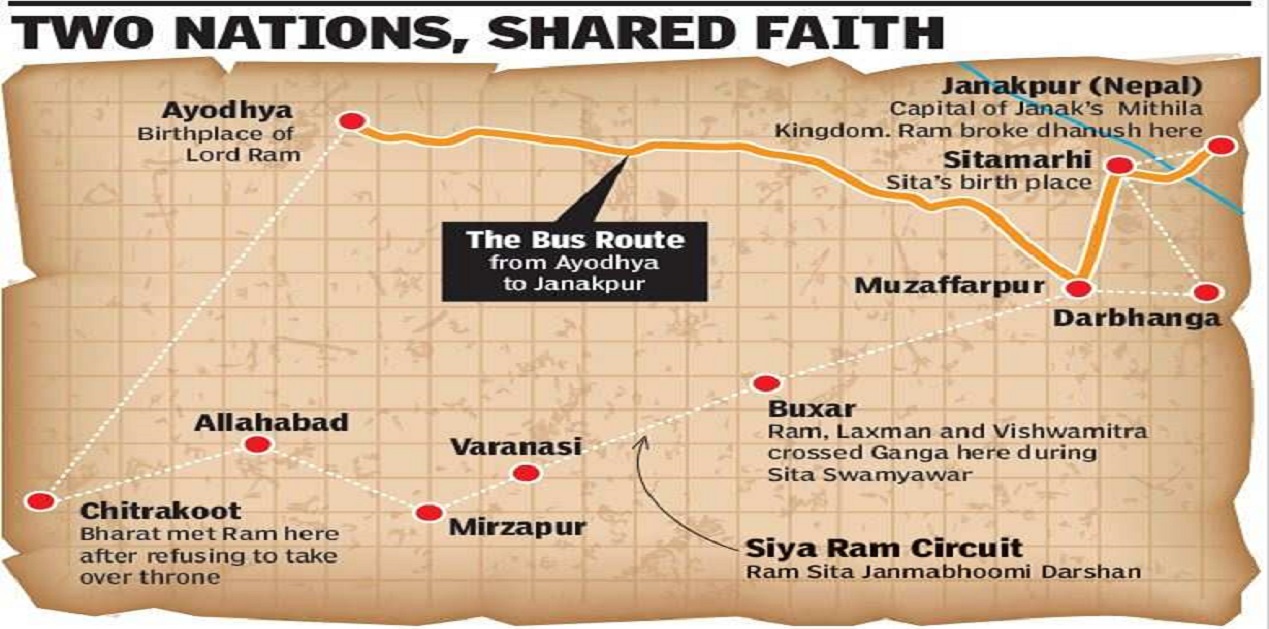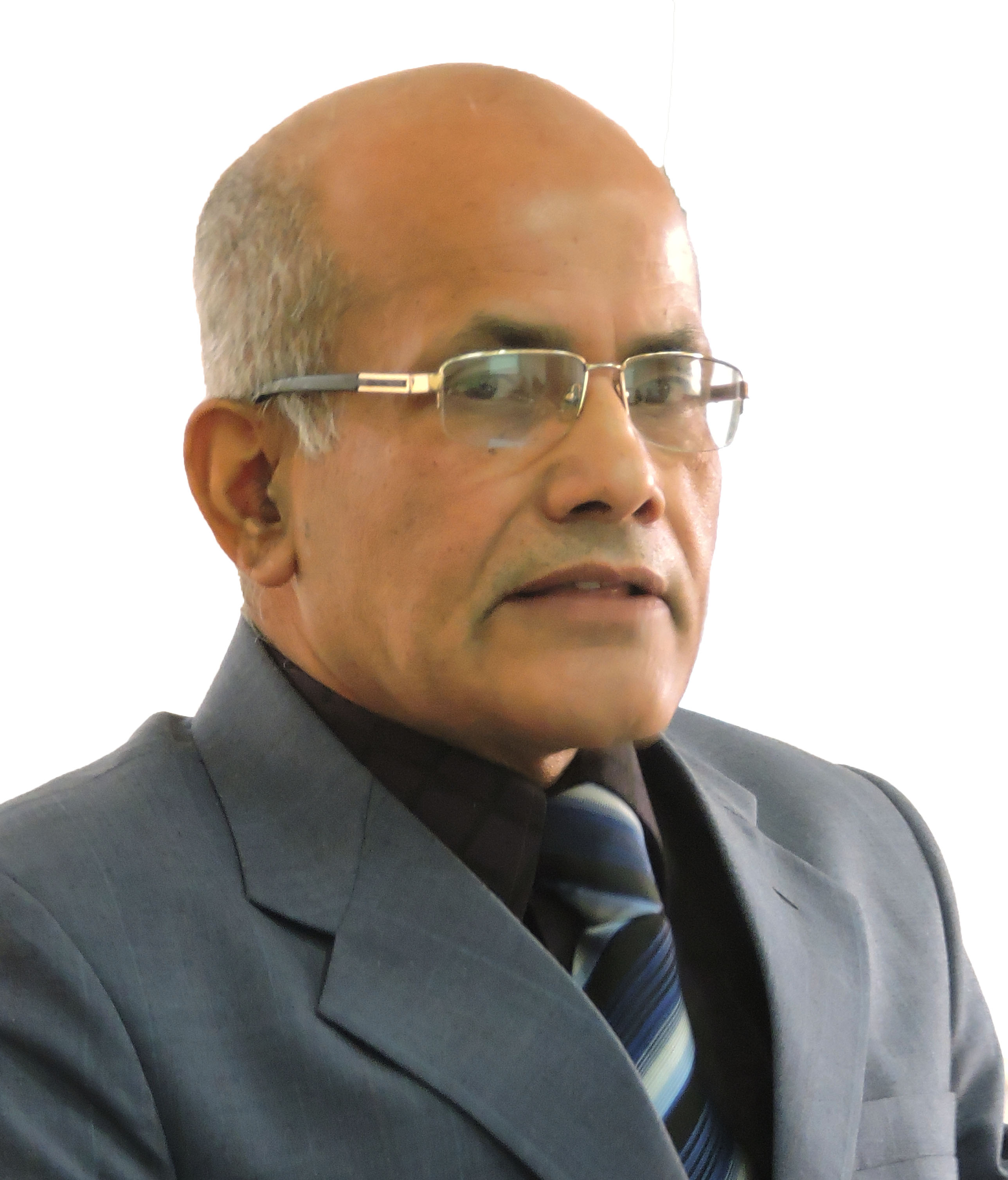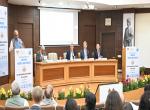The recent verdict as given by India’s Supreme Court to allow the construction of Lord Ram’s temple at in Ayodhya has been heartily welcomed by over a billion-plus Hindus in India and other parts of the world, including in Nepal. In Janakpur, the capital of ancient Mithila state and now the temporary capital of Province 2 in Nepal, people rejoiced a lot on this occasion.
It was natural for the people of Janakpur to feel so happy about Indian Supreme Court verdicton Ayodhya. This is so because Janakpur happens to be birthplace of Goddess Sita, apart from being the sasural (wife’s ancestral home) of Lord Ram. This amply demonstrates the importance of the cultural factor in uniting the people of the two Hindu-dominated countries, Nepal and India.
Janakpur lies in the southern part of Nepal just at the distance of some fourteen kilometers from the Nepal-India border. It is well connected to different parts of Nepal through roads. Air connectivity between Janakpur and Kathmandu is well known. The nearest border points that join Janakpur with different parts of India, include Bhittamore, Jatahi and Jaynagar. The distance between Janakpur (Nepal) and Ayodhya (Uttar Pradesh, India) is around 520 kilometres through NH27.
During the mediaeval period when India was ruled by the Muslims, many Hindu temples were attacked in India and also in Nepal. In this effort, Ram Janmbhoomi temple in Ayodhya, the birthplace of Lord Ram was also attacked and converted into a mosque. Ever since then the Hindus started opposing such a move of converting Ram Janmbhoomi temple into a Babri mosque.
In 1991, the Hindu Kar Sevaks (volunteers) razed the so-called Babri mosque. And, finally, on November 9, 2019 India’s Supreme Court in its verdict allowed the construction of Ram Temple at the site of Babri mosque. The decision by the apex court was mainly based on the pieces of evidence made possible by the evacuations of the disputed site of Ram Janmbhoomi where the structure of Hindu temple was found underneath the Babri mosque. Immediately after the Ayodhya verdict, people in Janakpur observed the occasion by lighting Diwali (festival of light). As if this was not enough, they also exchanged sweets in their mood of ecstasy.
Commenting on the Ramjanmbhoomi verdict, Ram Sharan Das, a Vaishnav saint, in Janakpur stated, ‘Satya Meba Jayete’, meaning truth ultimately prevails. Expressing her satisfaction over the Supreme Court verdict, Rashmi Mahato said that Goddess Sita will now have her abode at the Ram Temple in Ayodhya. Engineer Pramod Nirala said that the Supreme Court verdict in India has given justice to the people. He also added that the verdict enabled the Indian judiciary system to gain a new height in its history.
As it is well known, Goddess Sita and Lord Ram dwell in the hearts of each Hindu. Therefore, Janakpur, the birthplace of Goddess Sita, apart from Ayodhya, the birthplace of Lord Ram, happen to be as sacred to the Hindus as Mecca and Medina are to the Muslims and Jerusalem is to the Christians and the Jews.
As per the Ramayana text, Lord Ram and Goddess Sita entered into the knot of marriage in Janakpur in the Treta Yuga some ten thousand years ago. Lord Ram was able to win the hands of Goddess Sita in marriage only when He exhibited his supernatural power by breaking the Pinak Dhanush (bow) during the Swayambar ceremony (in which a girl selects her husband for marriage at her own will). Lord Ram easily broke the Pinak Dhanush, which was not even shaken a bit by many others who had come to attend the Swayambar ceremony with the sole objective to win the hands of Goddess Sita for marriage.
Ever since the Treta Yuga, the Hindu devotees, particularly in Janakpur, have been celebrating Vivah Panchami, the marriage day of Lord Ram and Goddess Sita, with a great sense of devotion. This year in 2019 the Vihah Panchami is being observed on December 1. In Janakpur, the Sasurali of Lord Ram, each year marriage between Lord Ram and Goddess Sita is performed in a formal way. Earlier a 15-day Mela (fair) used to be organized on this occasion in Janakpur, but now thousands of people from Nepal, India and other parts of the world visit Janakpur mainly on Vivah Panchami day out of devotion to Lord Ram and Goddess Sita.
During the Vihah Panchami, formal Baraati party comes to Janakpur from Ayodhya at the interval of five years. By coincidence, this year in 2019, the Vivah Panchami is being celebrated uniquely in Janakpur as the Indian Supreme Court’s verdict in regard to the construction of Ram Temple in Ayodhya has added a fresh joy among the people both in Nepal and India.
Unlike in the past, this year 108 men from Meerut, Saharanpur, Ayodhya and Lucknow in Uttar Pradesh, apart from Indore and Bhopal in Madhya Pradesh and also from different places of Bihar are likely to enter into an alliance with the girls from Janakpur. The Dharmyatra Mahasangh, an outfit of
Vishwa Hindu Parishad of India, has taken an initiative to organize the event. A 13-day marriage ceremony that is being organized from November 21 to December 4 will be launched from Janaki Ghat in Ayodhya and, which will finally end in Gorakhpur during the return trip from Janakpur. The marriage procession will stay at eight places, including in Ambedkarnagar, Mau and Azamgarh in UP and Buxar, Patna, Hazipur, Motihari, Muzaffarpur, Sitamarhi, and Darbhanga in Bihar. The marriage ceremony between the Indian and Nepalese couples will be performed at Dashrath Mandir in Janakpur.
Undoubtedly, the verdict of the Indian Supreme Court in regard to the construction of Ram temple in Ayodhya is a historical event, which is related to the sentiments of the common people. This year the way the Vihah Panchami festival is being celebrated in Janakpur amply demonstrates this fact. The more such cultural events are organized, the more it will help in promoting the ages-old social, cultural, economic and even political relations between our two great countries.
Jha is Executive Director of Centre for Economic and Technical Studies in Nepal.
(The paper is the author’s individual scholastic articulation. The author certifies that the article/paper is original in content, unpublished and it has not been submitted for publication/web upload elsewhere, and that the facts and figures quoted are duly referenced, as needed, and are believed to be correct). (The paper does not necessarily represent the organisational stance... More >>
Image Source: https://static.toiimg.com/photo/msid-64130631/64130631.jpg











Post new comment